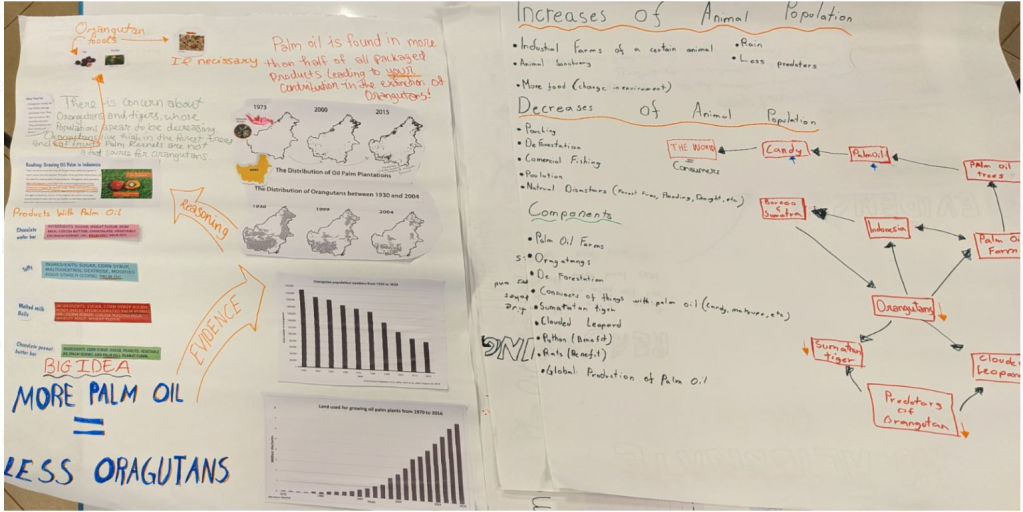We launch into the final unit of the year – OpenSciEd Unit 7.5 – Ecosystem Dynamics – and find a shift away from lab table investigations to working with data, concept mapping and creating links within an affected ecosystem. The storyline of this unit makes a connection between orangutans, palm oil and the Halloween candy that students may be excited to eat.
As this unit kicked off, I felt that a platform for students to collaboratively construct their understanding was needed. In other units, students have done a bulk of work in their own notebooks with some collaborative modeling. Data collection was often done in groups and then students discussed to individually summarize the evidence and their take-aways. In this case, we are looking for connections and the conversations coming out of groups is focused and of high quality.
To set students up for success, I provided groups with a permanent work space in the form of posters. The goal is not a final, for-display piece of work but to document process and to use the space for groups to make meaning. It’s nice to see how groups choose their own display methods and as we share in class, this ups the quality of various groups. By repeatedly coming back to a growing project board, students are upping their connections and linking previous classes to the current ones.


Students had an initial belief that we should substitute palm oil for another type of oil. This was nicely questioned through the use of data regarding the productivity of oil palm trees; groups impressed me in their ability to analyze a data set and return with meaningful conclusions. Deciding that oil palm trees are quite efficient, we then wondered if there were places that oil palm trees could grow without supplanting native species. Variations of the following conversations happened across the room –
‘Frank! We figured it out. There’s a place in Brazil where we could plant the trees!’
‘Wait a second… why aren’t there rainforests there?’ queried another.
‘Maybe there were and they’ve already been cut down,’ chimed a third.
They then sprang to their laptops and figured out that their hunch was correct – that part of the rainforest had already been replaced by pastureland.
From student initiative to strong connections via readings and data, this unit is currently shaping up to be engaging and informative for these Grade 7 scientists!
